Mustard seeds produce spicy, edible leaves that can be used to season bland food dishes and create tasty salads. Mustards have a strong flavor and are typically coarse in texture. They belong to the Cruciferae family of vegetables which also includes broccoli and cabbage. Mustard greens are fast-growing and prefer cooler temperatures to develop well. Like cabbage, a light frost can improve their flavor. Growing Mustard is easy, and they are an ideal cool-weather crop for the beginner gardener.
The leaves have a robust piquant taste, and their fragrance goes well in salads or added to stir fry. Mustard leaves are a healthy addition to your family’s diet. They are low in calories and high in vitamins A, C, and beta-carotene. Mustards contain compounds which are believed to have cancer-preventing benefits, including antioxidants and natural detoxifying properties.
Types of Mustard Greens
Red Giant Mustard: (45 days) Brassica juncea. Open-pollinated. Large purple-tinted savoyed leaves make the 18" plants very decorative. In colder temperatures, color intensifies as spiciness wanes. Red Giant has been described as peppery or tasting like horseradish. This Japanese heirloom mustard is a standard ingredient in spicy mesclun. It’s very cold hardy.
Toraziroh Mustard: (45 days) Brassica alboglabra. Open-pollinated. A robust performer with just the right kind of mustardy bite. Rapidly develops prolific yields of very dark green large leaves that are not overwhelmingly pungent. Toraziroh is a Brassica lover’s favorite. Stems, also edible, have a flavor reminiscent of pac choy. It is relatively slow to bolt.
Green Wave Mustard: (45 days) Brassica juncea. Open-pollinated. This 1957 AAS winner has a traditional hot mustardy flavor that makes it a prime ingredient in piquant mesclun. Not as hot when cooked. Green Wave will come back when cut and is very cold hardy.
Steps to Grow Mustard Greens in a Pot
Things you’ll need:
- Vermicompost or any other organic compost
- Fertile soil
- Sturdy container (planter)
- Coffee filter
- Garden gloves (optional)
- Spray pump
- Hand Trowel
- Seeds
- Garden sticker to label the plant
Step 1. Select a pot of suitable size

Mustard greens can be successfully grown directly in a planting bed, raised bed, or any suitably sized container depending on your space.
A sturdy rectangular window box with drainage holes is a good option.
Step 2. Line the bottom with coffee filters to maintain drainage
Before adding soil to the planter, create a drainage layer by placing coffee filters at the bottom of the planter. This will improve drainage and keep the soil from spilling out. Plus, a drainage layer works as a barrier between the excess water and your plant.
Step 3. Prepare the soil

These plants grow well in most soils, but rich, well-drained soil with a pH of no less than 6.0 is considered ideal.
It is important to amend the potting soil with vermicompost or any other organic compost before planting to improve the soil quality and nutrient availability. Generally, a good quality organic potting soil will contain compost and other plant healthy ingredients to ensure the vitality of your plants.
Fill the planter with the potting soil, leaving approximately a 1-inch space from the top of the soil to the rim of the container. Mustard Greens require sufficient moisture and providing that space will allow for ample watering without causing the soil to wash out of the pot or container.
Step 4. Spread the seeds
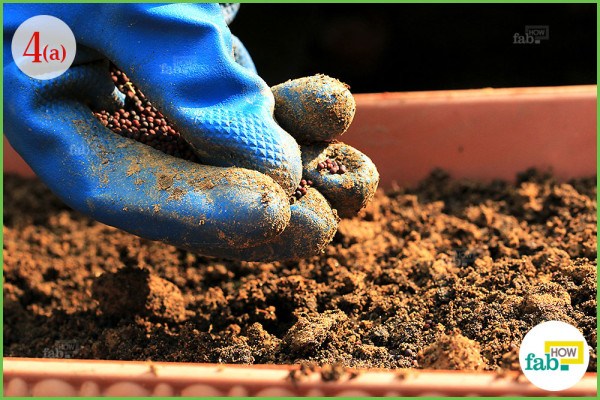
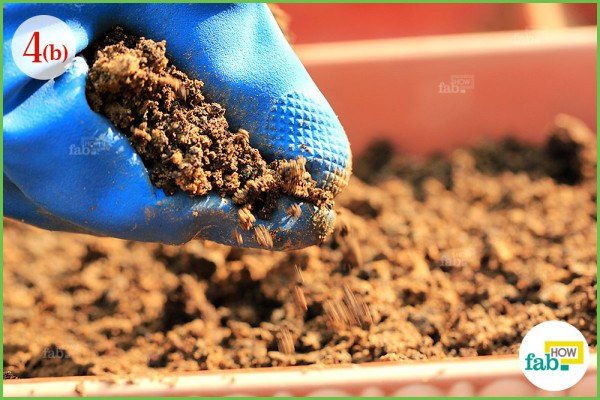
Broadcast the seeds generously and evenly on the soil and lightly cover with no more than approximately 1/8 inch of potting soil. Do not bury the seeds too deeply or they may not germinate.
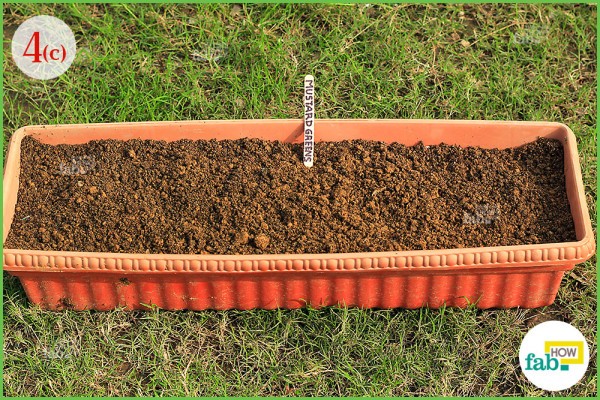
Spray mist the soil gently and keep it slightly moist until the seeds begin to sprout. Do not let the soil dry out. As the Mustard Greens grow, they will require more water, up to 2 inches per week.
Step 5. Wait for germination

It may take about 4 to 5 days before germination occurs.
Water once daily, keeping the soil moist, but avoid overwatering or soaking the new sprouts. More frequent watering encourages roots to stay near the soil surface making the plants more susceptible to drought.
Mustard greens grow best in a sunny location but will tolerate some afternoon shade.
Step 6. Keep checking the growth

Watering is crucial once the seedlings are about 1 inch tall. Evenly moist soil will ensure optimum growth and vitality for your mustard greens.
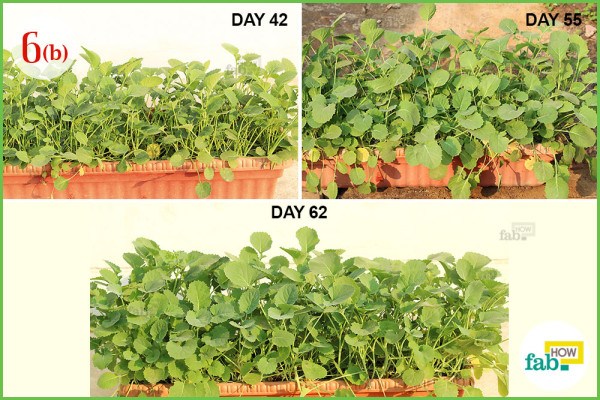
Mustard greens prefer cool weather. Avoid excessive heat as the plants will bolt and go to seed quickly if they are placed in a very sunny and hot area.
Mustard greens don’t usually need to be weeded when seeded generously and grown in an organic potting soil mix. They are pest and disease resistant as well but can be attacked by cabbage loopers or cabbage worms. Remove the caterpillars and use an organic pest control, if necessary, to repel any more nibbling insects.
Step 7. Harvest young leaves
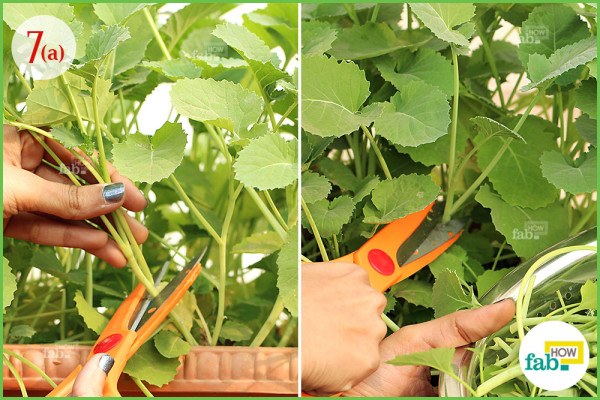
Most Mustard Greens are ready to harvest in 40 days. Young and tender plants taste best. To harvest, cut individual leaves off the plant using garden or kitchen shears. Plucking the leaves with your hands may damage the plant.
Allow 3 to 4 inches of the plant to remain so that the leaves may grow again and produce another harvest. Many Greens that produce more than one harvest are considered “cut and come again” crops.
You can cut the entire plant and harvest all the leaves at once, or harvest just what you need daily.
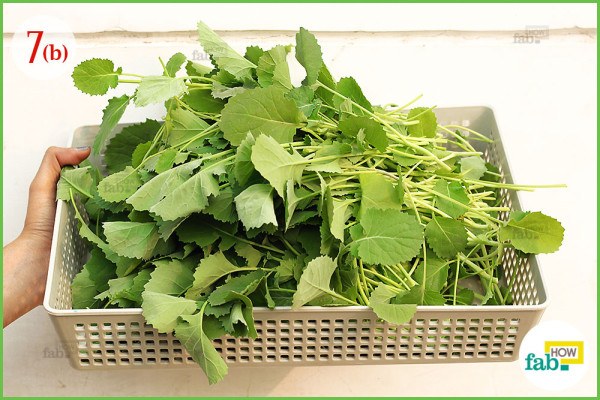
Young leaves have a milder flavor for salads. Older leaves will have a bitter taste. Discard any yellow leaves that may appear on the plant.
Additional tips for growing mustard
- Mustard plants can tolerate a mild frost; however, they will succumb to a hard freeze. Cover the plants when there is a frost warning in your area.
- Harvest mustard greens before the plants begin to flower to promote re-growth.
- Flowers can be left on the plant until the pods burst open and spill their seeds. These seeds can be used for growing the plant again or to create mustard powder and condiments.
- Sow new seeds every 3 weeks or so to get a successive harvest throughout the winter months.
- You can store unwashed mustard greens in a zippered baggie in your refrigerator for up to 3 days after harvesting.




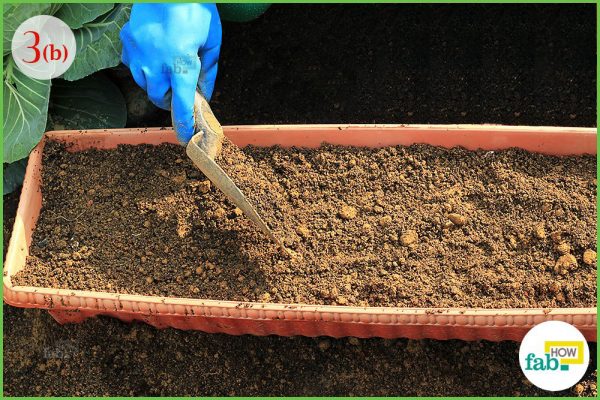
Good way to grow mustard seed is this
Hi Sneha
Thank you for your comment.